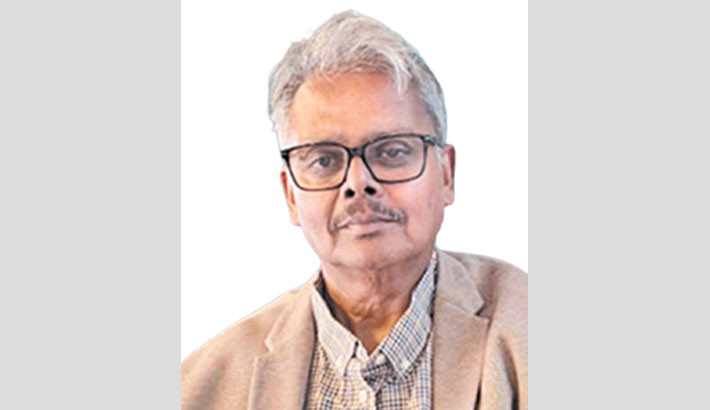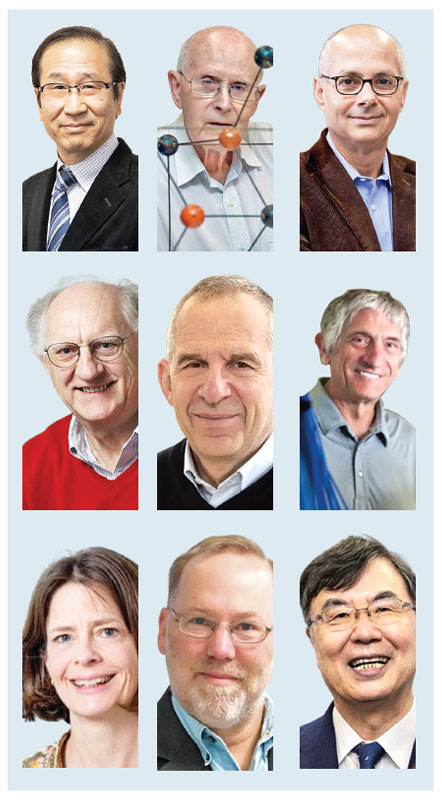NOBEL PRIZES IN SCIENCE 2025
How Discoveries Benefit Humanity
RUMINATION
Published: 15 Oct 2025

Dr Kanan Purkayastha
The Nobel Assembly at the Karolinska Institute has decided to award the Nobel prize in Physiology or Medicine 2025 to Mary E. Brunkow (of Institute for Systems Biology, Seattle, USA), Fred Ramsdell (of Sonoma Biotherapeutics, San Francisco, USA) and Shimon Sakaguchi (of Osaka University, Osaka, Japan) for their discoveries concerning peripheral immune tolerance. Brunkow and Ramsdell are US citizens who were born in 1961 and 1960 respectively. And Sakaguchi is a citizen of Japan who was born in 1951.
In order to understand the discovery of Sakaguchi, Brunkow and Ramsdell, we need to know first what the ‘peripheral immune tolerance’ means. Our immune system protects us from thousands of different microbes trying to invade our bodies. But this immune system can attack good cell in our body as well. So, the question is- how does the immune system determine what it should attack and what it should defend? This question instigates three researchers to find out the solution. They have discovered a mechanism through which the immune system is kept in check. In fact, the laureates identified the immune system’s security guards, known as ‘regulatory T cells’, which prevent immune cells from attacking our own body. T cells are a type of white blood cell called lymphocytes, which help immune system fight germs and protect us from diseases. There are two main types of T cells. One is cytotoxic T cells that destroy infected cells and another is helper T cells that send signals that direct other immune cells to fight infection.
In 1995 Sakaguchi showed that the immune system is more complex and discovered a previously unknown class of immune cells, which protect the body from autoimmune diseases. In 2001, when working with mice, Brunkow and Ramsdell discovered that mutation in a gene of mice can cause a serious autoimmune disease. Two years later, Sakaguchi was able to link Brunkow and Ramsdell’s discovery with his own discovery that was done in1995 and showed that Foxp3 gene identified by Brunkow and Ramsdell governs the development of the cell that he identified before. The mechanism that they have established is known as ‘peripheral immune tolerance’ that prevents the immune system from harming the body.
Meanwhile, the Royal Swedish Academy of Sciences (RSAS) has decided to award the Nobel Prize in Physics 2025 to John Clarke (of University of California), Berkeley, Michel H. Devoret (of Yale University, New Haven and University of California), Santa Barbara and John M. Martinis (of University of California, Santa Barbara, USA) for the discovery of macroscopic quantum mechanical tunnelling and energy quantisation in an electric circuit.
In 1984 and 1985, Clarke, Devoret and Martinis conducted a series of experiments with an electronic circuit. In their experiments, they demonstrated for the first time that even large objects, namely electric circuits, can under certain circumstances, behave like atoms and exhibit quantum mechanical properties. They thus constructed millimetre-sized artificial atoms that can be electrically controlled. Compared to real atoms, these artificial atoms are technically much easier to handle.

The RSAS has decided to award the Nobel Prize in Chemistry 2025 to Susumu Kitagawa (of Kyoto University, Japan), Richard Robson (of University of Melbourne, Australia) and Omar M Yaghi (of University of California) for the development of metal-organic frameworks.
In order to understand this year’s Chemistry Nobel Prize winning research, we need to understand first what metal-organic framework (MOF) means. MOF is a porous material, which can be developed by metal ions that linked by long organic (carbon-based) molecules. When metal ion and molecules organised, they form crystals that contain large cavities. This means MOF is structured like molecular scaffolding, which has vast amount of internal space.
In 1989, Robson combined positively charged copper ions with a four-armed molecule. Copper ion was attracted to each of the four arms. The resulted molecule is a diamond-like structure with many cavities in it, but it collapses very quickly. Kitagawa and Yaghi provided further development to stable the foundation of the molecule’s architecture. Between 1992 and 2003 Kitagawa and Yaghi independently developed method that showed that MOF can be made flexible. Kitagawa showed that gases can flow in and out of the molecular construction. Yaghi created a very stable MOF. Since their discovery, thousands of MOF have been developed that can be used for separating per and poly-fluro alkyl substances (PFAS) from water or capturing carbon dioxide from atmosphere or harvesting water from desert air.
In short, this year’s Nobel Prize in Physiology or Medicine is about discovering an immune system related mechanism in physiology, which is benefitting humanity in various ways. Nobel committee has mentioned that the discovery is spurring the development of medical treatments for cancer and other autoimmune disease. This may also lead to successful transplantations and various other clinical trials are now underway. Quantum mechanics is the foundation of all digital technology and this year’s Nobel prize in Physics is the recognition of this. Humanity will benefit from the development of the next generation of quantum technology, including quantum cryptography, quantum computers, and quantum sensors. Discovery of MOF recognised by this year’s Chemistry Nobel prize has enormous potential that will be the material of the twenty first century and will bring the greatest benefit to humanity.
_______________________________
The writer is a UK-based academic who writes on science, philosophy and education

